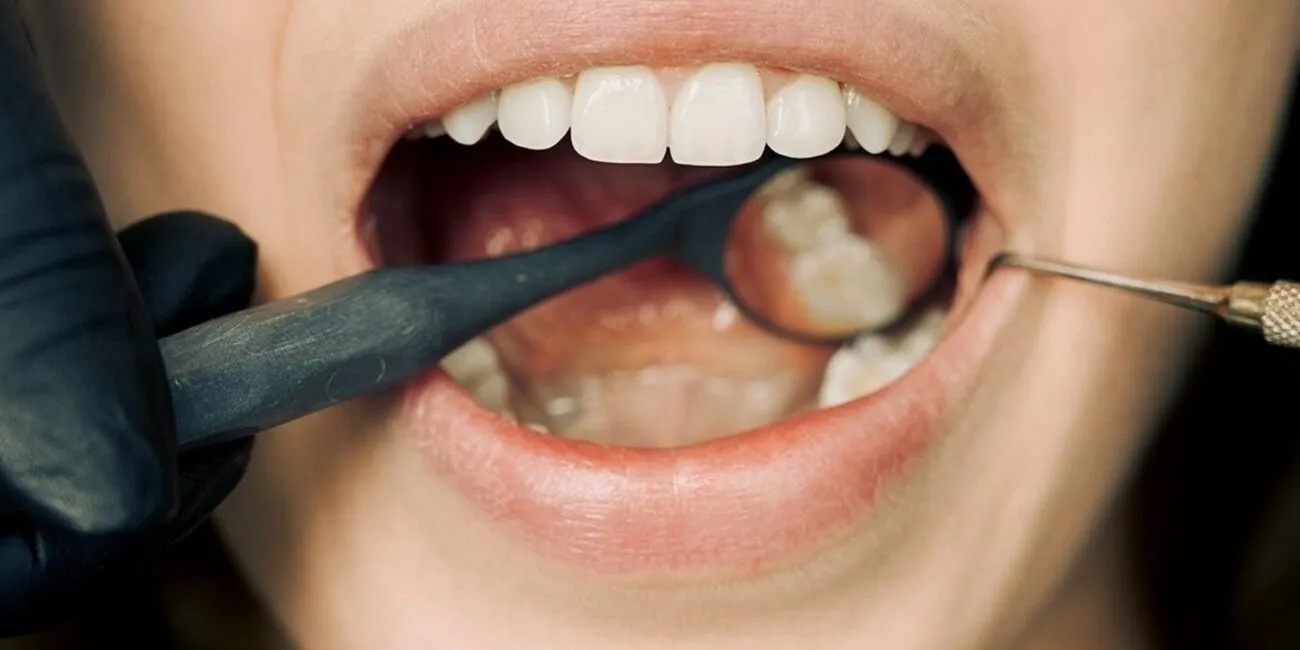

It is common to experience food getting stuck in our teeth. That annoying feeling of discomfort and weird sensation felt somewhere within our mouth but you just can’t pinpoint the exact location.
It’s important to practise good oral hygiene by brushing and flossing regularly. Neglecting to do so may not seem significant in the short term, but its negative impact will become evident over time and regret may follow.
Getting food stuck in teeth can be a major issue, as it can cause discomfort and other dental problems. Moreover, neglecting proper oral hygiene can result in the accumulation of unwanted bacteria in the mouth. If food particles remain lodged between your teeth and gums, they can break down into acids which may cause cavities and other forms of tooth disease. Additionally, food particles left in the mouth for too long can also contribute to bad breath and an unpleasant taste when eating and drinking.
Do you know that the bacteria in our mouth feed on food debris and release acid, which will then lead to the formation of cavities? The acid can wear down enamel and decay teeth, causing a whole lot of dental issues. Untreated cavities can cause massive pain and infections. It can affect different aspects of your daily life such as eating, speaking, playing and learning. In severe cases, it can lead to abscesses (pus that formed inside the teeth)and in the worst scenario, death.
Gum disease is also known as periodontal disease, which happens due to the infection of gum tissue. People who suffer from gum disease usually have inadequate oral hygiene habits, such as not brushing or flossing their teeth regularly, which allows plaque to build up and harden into tartar, providing a breeding ground for bacteria to grow. These bacteria will then work their way into your gums and cause an infection. With early intervention, it’s still possible to be treated and fully recover. However, if it’s left for too long, it can contribute to other health complications such as heart disease, stroke, and diabetes.
Not only does untreated gum disease lead to a painful experience, but it can also lead to tooth loss. Losing your teeth as an adult can pose a real problem, you have to go to a dentist to get dentures, dental implants, bridge, or even implant-retained dentures to replace the missing teeth. These treatments can be costly and time-consuming. Imagine how it would affect your self-confidence as you interact with other people, you would constantly worry about how people would judge you or comment about your lost tooth behind your back. This can harm your mental well-being and how you live your daily life. Maintaining good oral hygiene practices such as brushing and flossing your teeth regularly, and visiting your dentist regularly can help you prevent gum disease and are crucial in ensuring the longevity of your teeth.
Try swishing water in your mouth after eating to quickly remove any food particles. Typically, the longer food remains between your teeth, the more difficult it is to get it out. As soon as you see food in your teeth, swishing is essential to get it out before it can be lodged deeper.
It could take a little more effort to remove stubborn food particles from teeth. After eating, gently brush your teeth or floss if swishing doesn’t work. This extra effort can help remove the food and maintain good oral hygiene.
Any fruit or vegetable with little seeds—blueberries, blackberries, strawberries, etc.—will probably leave you with those seeds firmly lodged in the grooves of your back molars. Popcorn kernels are also notorious for becoming stuck in teeth due to their stiff and curved shape, as they frequently fit exactly around a tooth at the gum line. These can be a little more difficult to get rid of. To minimize the risk of food getting clung, make an effort to break up any seeds or kernels before eating. Use your tongue as the first method to remove food debris from your teeth.
Try to always keep a single-use flossing tool with you so you may remove food from your teeth without using the traditional toothpick. These flossers are typically constructed of plastic and contain a little pick and a small amount of floss strung through one side. While wooden toothpicks can shatter into tiny splinters and hurt gums, these plastic flossers are more durable.
Food particles can easily enter the small formed crevices of teeth with cavities or are broken. If there are any spots on these teeth where food seems to be getting stuck regularly, let your dentist know. This can imply that harm has already been done without your knowledge. Food won’t be able to enter these tiny holes anymore after the teeth have been fixed and sealed.
Aligning the bite could be the best solution if food consistently gets stuck between the same set of teeth. Teeth that are even marginally spaced apart from one another can easily trap food in the area between them. Since this area is more difficult to keep clean and comes into contact with particles more frequently, these teeth are consequently far more susceptible to dental decay. Bringing your teeth closer together will ensure a healthier bite, regardless of whether this gap developed over time or if it has always been present.
The use of porcelain veneers can be another alternative to close the gap between front teeth. However, this procedure requires more planning and execution compared to dental fillings, but most dentists would still consider it relatively easy and the results are longer-lasting for patients to disregard the minor inconveniences. A veneer will be produced in a lab and is a thin piece of porcelain, it is designed to match the shape and colour of your teeth. You can think of it as a mask placed on the surface of your tooth, concealing any flaws and gaps in your teeth.
Most users talk about how veneers are aesthetically pleasing and longer-lasting, given that it is done properly by a licensed dentist and from a legit dental clinic. However, patients will be informed of how the procedure is irreversible and proper consideration should be exercised. A substantial layer of enamel has to be removed from the front of your teeth to provide space for the veneer to be applied. Your teeth will become exposed and more sensitive without the enamel and will require the protection of the veneer subsequently. Veneers can be a solution for many cosmetic problems, but orthodontics will usually be required depending on the cause of the gaps in your teeth.
Since you have read this far, and if you happen to have any dental issues, don’t hesitate or be shy to pay a visit to White Perfect Dental, our professional dentists are here to offer you top-notch dental services and professional advice. We are here to make your visit convenient and stress-free.




Fissure sealant
Dental fillings
Root canal treatment
Tooth extraction
Wisdom tooth removal
Crowns & bridges
Branches & Operating Hours
Contact Information
Make an Appointment


Fissure sealant
Dental fillings
Root canal treatment
Tooth extraction
Wisdom tooth removal
Crowns & bridges
Branches & Operating Hours
Contact Information
Make an Appointment
Copyright © White Perfect Dental Surgery Sdn Bhd (Company No. 201001012274 (1000198-P)).
Website Managed by MYSense. All Rights Reserved.